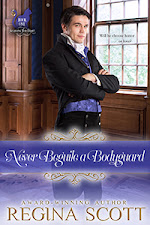 I’m delighted to announce that Betraying Season is being released today in paperback from Square Fish/Macmillan!
I’m delighted to announce that Betraying Season is being released today in paperback from Square Fish/Macmillan!For an excerpt and other notes about the story, please visit my website.
For on-line ordering info, you can check out your local independent bookseller or Indiebound, Barnes & Noble, Amazon, Powell's, or the Book Depository (which has free international shipping!)
And to win a free copy, just post a comment today or on Regina’s post Friday. I’ll be picking two winners this week!
Now, as for my weekend...
I'm lucky enough to live in a part of the country that's seen a fair bit of history, and once a year, not too far from me, some of that history comes to life. Every fall for the last forty years at the Wayside Inn, the Annual Colonial Faire and Muster of Fifes and Drums has delighted visitors with a mock battle between reenactor minutemen and Redcoats (need I say whom always wins?), craft demonstrations of 18th century life, and best of all, a full day of fife and drum music provided by the fifteen or so fife and drum corps invited from all over New England. I can't, alas, play you the music, but I can give you an idea of some of the wonderful costumes worn by the reenactors. Makes you understand why Lydia and Kitty are constantly swooning over Wickham and his friends in Pride and Prejudice, doesn't it?
These folks of the Middlesex County Volunteers wore wigs and all--very sharp!
 Have to have Minutemen, of course (the Stow, MA Minutemen, to be precise):
Have to have Minutemen, of course (the Stow, MA Minutemen, to be precise): And Redcoats to skirmish with the Minutemen:
And Redcoats to skirmish with the Minutemen: And let's not forget the Navy, both the officers...
And let's not forget the Navy, both the officers... And the sailors. Some of these guys went barefoot, which takes reenacting to a whole different level of dedication:
And the sailors. Some of these guys went barefoot, which takes reenacting to a whole different level of dedication: Don't you love...
Don't you love...
...a man in a uniform?
 Enjoy!
Enjoy!




















